Old Browser
Looks like you're visiting us from {countryName}.
Would you like to stay on the current country site or be switched to your country?


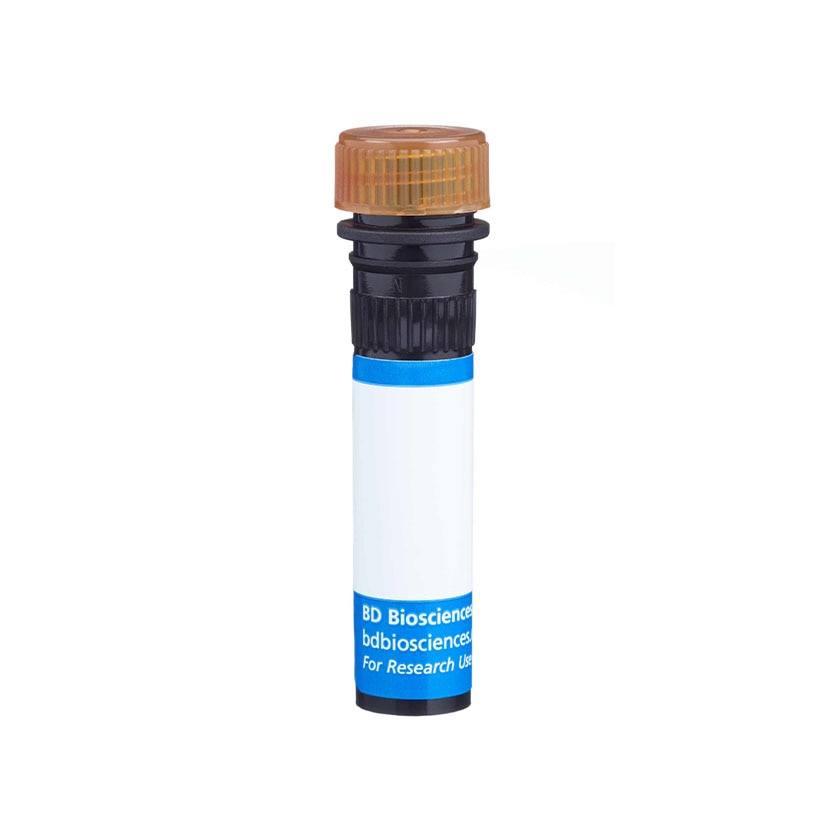

Flow cytometric analysis of Stat3 expression in human peripheral blood lymphocytes. Whole blood was treated with BD Phosflow™ Lyse/Fix Buffer (Cat. No. 558049) to lyse erythrocytes and fix leucocytes. The cells were subsequently permeabilized with BD Phosflow™ Perm Buffer III (Cat. No. 558050; on ice, 30 min). The cells were then washed with BD Pharmingen™ Stain Buffer (Cat. No. 554656/554657) and stained with either PerCP-Cy™5.5 Mouse IgG1, κ Isotype Control (Cat. No. 550795, dashed line histogram) or PerCP-Cy™5.5 Mouse Anti-Stat3 antibody (Cat. No. 564133; solid line histogram). The fluorescence histograms were derived from gated events with the forward and side light-scatter characteristics of intact lymphocytes. Flow cytometric analysis was performed using a BD™ LSR II Flow Cytometer System.


BD Phosflow™ PerCP-Cy™5.5 Mouse Anti-Stat3

Regulatory Status Legend
Any use of products other than the permitted use without the express written authorization of Becton, Dickinson and Company is strictly prohibited.
Preparation And Storage
Product Notices
- This reagent has been pre-diluted for use at the recommended Volume per Test. We typically use 1 × 10^6 cells in a 100-µl experimental sample (a test).
- An isotype control should be used at the same concentration as the antibody of interest.
- Source of all serum proteins is from USDA inspected abattoirs located in the United States.
- Caution: Sodium azide yields highly toxic hydrazoic acid under acidic conditions. Dilute azide compounds in running water before discarding to avoid accumulation of potentially explosive deposits in plumbing.
- Please observe the following precautions: Absorption of visible light can significantly alter the energy transfer occurring in any tandem fluorochrome conjugate; therefore, we recommend that special precautions be taken (such as wrapping vials, tubes, or racks in aluminum foil) to prevent exposure of conjugated reagents, including cells stained with those reagents, to room illumination.
- PerCP-Cy5.5–labelled antibodies can be used with FITC- and R-PE–labelled reagents in single-laser flow cytometers with no significant spectral overlap of PerCP-Cy5.5, FITC, and R-PE fluorescence.
- PerCP-Cy5.5 is optimized for use with a single argon ion laser emitting 488-nm light. Because of the broad absorption spectrum of the tandem fluorochrome, extra care must be taken when using dual-laser cytometers, which may directly excite both PerCP and Cy5.5™. We recommend the use of cross-beam compensation during data acquisition or software compensation during data analysis.
- For fluorochrome spectra and suitable instrument settings, please refer to our Multicolor Flow Cytometry web page at www.bdbiosciences.com/colors.
- Cy is a trademark of GE Healthcare.
- Please refer to www.bdbiosciences.com/us/s/resources for technical protocols.
Companion Products
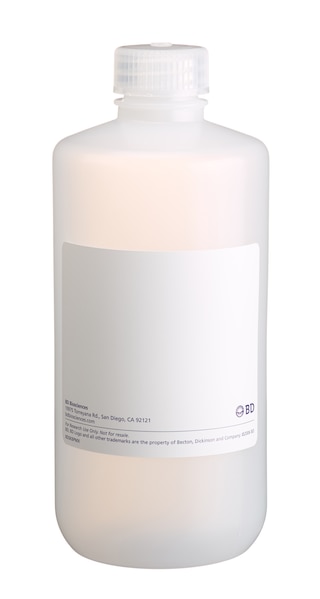
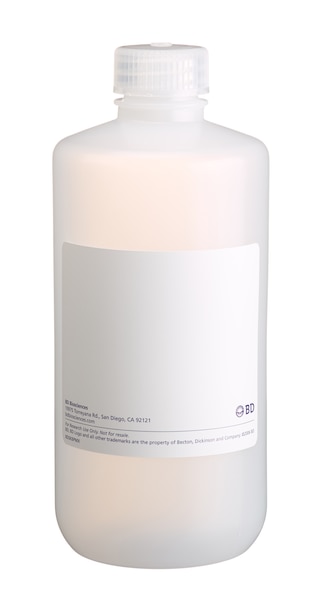
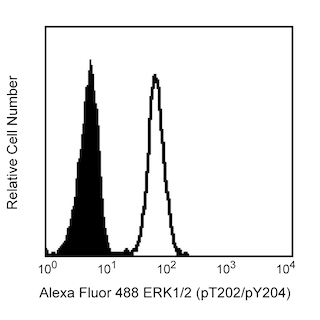
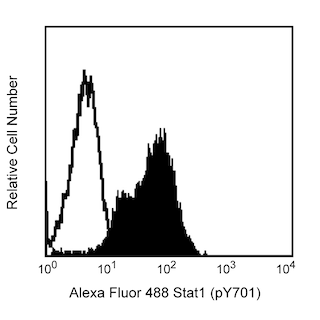
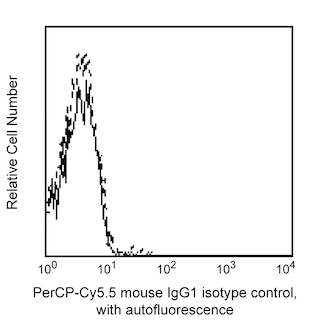
Stat (Signal transducer and activators of transcription) proteins are critical mediators of the biologic activity of cytokines, including interleukins, interferons, erythropoietin, and growth factors. Ligand-receptor interaction leads to activation of constitutively associated JAK family kinases and subsequent recruitment/activation of Stat proteins by tyrosine phosphorylation. Active Stat proteins then move to the nucleus to promote transcription of cytokine-inducible genes. Stat3 is a 92-kDa protein that is activated as a DNA-binding protein through cytokines, such as IL-6, and growth factors, such as EGF. Upon activation, Stat3 dimerizes, translocates to the nucleus and binds DNA response elements, thereby regulating gene expression. It has been reported that Stat3 binds to DNA as a homodimer, but it is also capable of binding as a heterodimer with Stat1. Stat3 is widely expressed and can bind to the sis-inducible element (SIE) site from the c-fos promoter. This site is similar to the GAS element that is present in IFN-γ induced genes.
The M59-50 monoclonal antibody recognizes Stat3 (isoform 1) regardless of phosphorylation status. The specificity of this antibody conjugate for flow cytometric analysis was validated by confirming that RNA-mediated interference (RNAi) of the specific protein reduced the staining of the cells (see figure). Furthermore, the capacity of the RNAi to down-regulate the expression of the relevant protein was confirmed by western blot analysis.

Development References (6)
-
Bromberg J, Darnell JE. The role of STATs in transcriptional control and their impact on cellular function. Oncogene. 2000; 19(21):2468-2473. (Biology). View Reference
-
Darnell JE Jr. STATs and gene regulation. Science. 1997; 277(5332):1630-1635. (Biology). View Reference
-
Kanai M, Konda Y, Nakajima T, et al . Differentiation-inducing factor-1 (DIF-1) inhibits STAT3 activity involved in gastric cancer cell proliferation via MEK-ERK-dependent pathway. Oncogene. 2003; 22(22):548-554. (Biology). View Reference
-
Kirito K, Osawa M, Morita H. A functional role of Stat3 in in vivo megakaryopoiesis. Blood. 2002; 99(9):3220-3227. (Biology). View Reference
-
Redell MS, Ruiz MJ, Gerbing RB, et al. FACS analysis of Stat3/5 signaling reveals sensitivity to G-CSF and IL-6 as a significant prognostic factor in pediatric AML: a Children's Oncology Group report. Blood. 2013; 121(7):1083-1093. (Clone-specific: Flow cytometry). View Reference
-
Smith PD, Crompton MR. Expression of v-src in mammary epithelial cells induces transcription via STAT3. Biochem J. 1998; 15:331-381. (Biology). View Reference
Please refer to Support Documents for Quality Certificates
Global - Refer to manufacturer's instructions for use and related User Manuals and Technical data sheets before using this products as described
Comparisons, where applicable, are made against older BD Technology, manual methods or are general performance claims. Comparisons are not made against non-BD technologies, unless otherwise noted.
For Research Use Only. Not for use in diagnostic or therapeutic procedures.
Report a Site Issue
This form is intended to help us improve our website experience. For other support, please visit our Contact Us page.